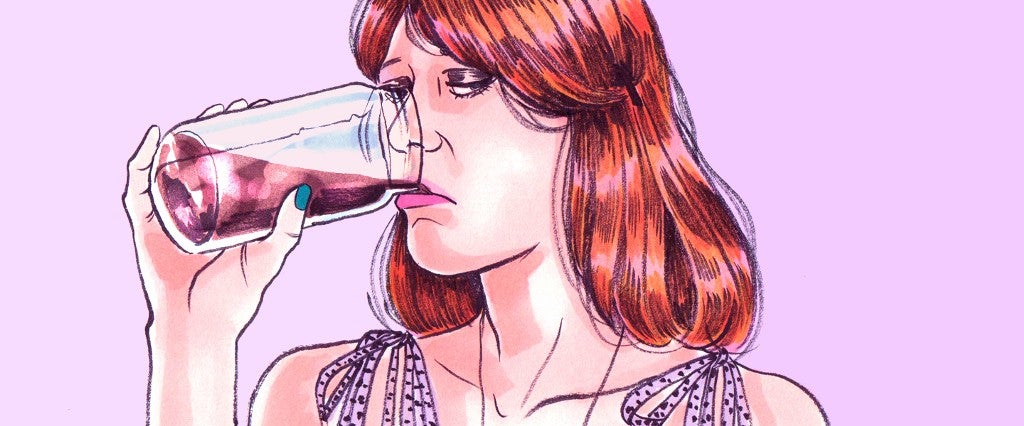There’s nothing like an ice-cold stubby bottle of decaf cold brew on a hot autumn day in Los Angeles to make you think: This is exactly how dumb things become cool.
I had picked up the bottle at a pop-up shop near MEL’s office in Venice, the eternal wellspring of dumb things that have become cool (skateboarding, big felt hats that cost almost $2,000 even though they make your head sweat, wellness, Snapchat, etc.), where a company called Swiss Water Process was giving away various decaf coffee drinks for free. You could get a decaf espresso, some decaf pour over, a decaf almond latte, and, most perplexingly, decaf cold brew, in a bottle.
Regular cold brew — in the opinion of me and many people who like drinking coffee — is bad enough. It tastes like artificially sweetened dirt, and despite its rep as being low-acid and therefore good for the peptically perturbed among us, is the only coffee I’ve met that can actually give me a stomachache. Good coffee, as defined by the current wave of nerds, lets the naturally fruity flavors of the coffee bean shine by using lighter roasts and precise brewing. Cold brew, on the other hand, lets the coffee steep in the water for so long that only the dark-roasty, caramely, dead basic flavors come out. It turns unique coffee into a homogeneous sludge.
Cold brew’s upside? A shit-ton of caffeine. The cold-brewing process can produce an absurdly juiced-up cup of coffee, and sometimes, if it’s hot and you need to electrocute your own brain to keep going through the day, that is a good thing.
Take out the caffeine, and you’re left with a bottle of brown bean juice, taking up space in your stomach (and if it wasn’t being given out for free, taking money out of your pocket) that could be occupied by any of the other wonderful things the world has to offer. Like water! Or beer! Or just a nice macchiato.
Even if you’re into cold brew, though, this seems like a weird sell. With prices often reaching $5 per cup, cold brew has serious, slightly fancy vibe — it’s like the hardcore IPA, or freakishly thick porter, to the mass market lager of normal iced coffee. Decaf coffee has a lame, distinctly un-fancy vibe — it’s what the old folks drink with doughnuts after mass in the church basement. My mother’s heart freaks out if she drinks any caffeine, but she practically lives on decaf Dunkie’s iced coffee, year-round, issuing a dark warning to the counter staff that any slip-up in her order might mean they’re essentially murdering her.
But the whole point of the decaf pop-up was to rewrite stereotypes of decaf as less than cool. Swiss Water Process is a Canadian company that strips coffee beans of their caffeine using a technique called… the Swiss Water Process. It’s something like the deluxe organic spa treatment of the decaf world — java giants like Folgers and Maxwell House just throw some chemicals in with their beans to strip out the caffeine, while SWP flushes the beans with plain water, leading to an end product that retains more of the original bean’s flavor.
SWP is not usually a consumer-facing brand; they already supply most fancy coffee brands with their decaf beans (including Stumptown, who made the decaf cold brew for the pop-up, though it came in unbranded bottles). “Counter to the expectation that a decaf drinker is an older person, or someone who can’t handle caffeine for medical reasons,” says Andrea Piccolo, Brand Manager at SWP, “our research shows that it’s really a younger generation that’s interested in caffeine and energy management.”
The decaf branding holy grail, then, is to convert the young person who stops drinking coffee in the afternoon because they don’t want to mess up their sleep schedule (aka “energy management”) into someone who just switches to high-class decaf and keeps on chugging well into the night.
Which, whatever, there’s nothing wrong with decaf. I get it, some people don’t want the caffeine. But if cold brew is already dumb (which it is), then decaf cold brew is definitely dumber.
